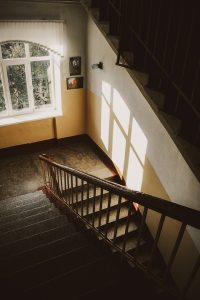Northern Lights: A Dazzling Show Awaits New Yorkers
Get ready, New Yorkers! You may soon have the chance to witness one of nature’s most breathtaking spectacles—the Northern Lights. Forecasts suggest that the aurora borealis could paint the sky with vibrant colors over parts of New York and several northern states on the night of Saturday, June 14. With a geomagnetic storm watch issued by the National Oceanic and Atmospheric Administration (NOAA), the anticipation is building.
What to Expect: A Moderate Storm
The NOAA’s Space Weather Prediction Center has classified this upcoming storm as a G2, indicating a moderate strength. For context, geomagnetic storms are ranked from G1 (minor) to G5 (extreme). This means you might have the perfect conditions to catch a glimpse of the captivating auroras, but timing is key!
Where and When to Look
According to NOAA forecasts, the best chances to view the aurora will be in areas with minimal light pollution, stretching from Idaho to New York. However, don’t forget that as we approach the June 20-21 summer solstice, longer daylight hours will limit your viewing opportunities.
Earlier this month, enthusiastic skywatchers across more than a dozen states had the chance to marvel at the swirling greens, reds, and purples of the aurora, and this weekend might offer yet another opportunity—provided the weather cooperates.
Pro Tip: Best Viewing Locations
- Avoid urban areas where light pollution may obscure your view.
- Seek out dark, open spaces—preferably with a clear sight of the northern horizon.
What Causes the Northern Lights?
You may wonder, what exactly causes this mesmerizing display? The northern lights, or aurora borealis, are formed when charged particles from solar activity, such as solar flares and coronal mass ejections, collide with Earth’s atmosphere. This phenomenon is most pronounced near the planet’s magnetic poles. For a deeper understanding, check out insights from NASA.
Can You See the Northern Lights Without Equipment?
Absolutely! The northern lights can be viewed with the naked eye—no telescope or special equipment is necessary. That said, visibility is contingent upon several factors such as:
- Location: Opt for darker areas away from city lights.
- Strength of the storm: A stronger storm typically means a better display.
- Weather conditions: Clear skies are crucial; even small clouds can hinder your view.
Final Thoughts
As excitement builds for this potential natural wonder, make your plans now and prepare for an unforgettable night. Grab your friends, find a spot away from the city lights, and gaze up at the sky. The northern lights are not just a sight; they are an experience that connects you to the wonders of the universe.
Stay tuned for updates, and don’t let this magical moment pass you by! For more on viewing conditions and tips, visit the NOAA Space Weather Prediction Center.
Contributing: USA Today Network






